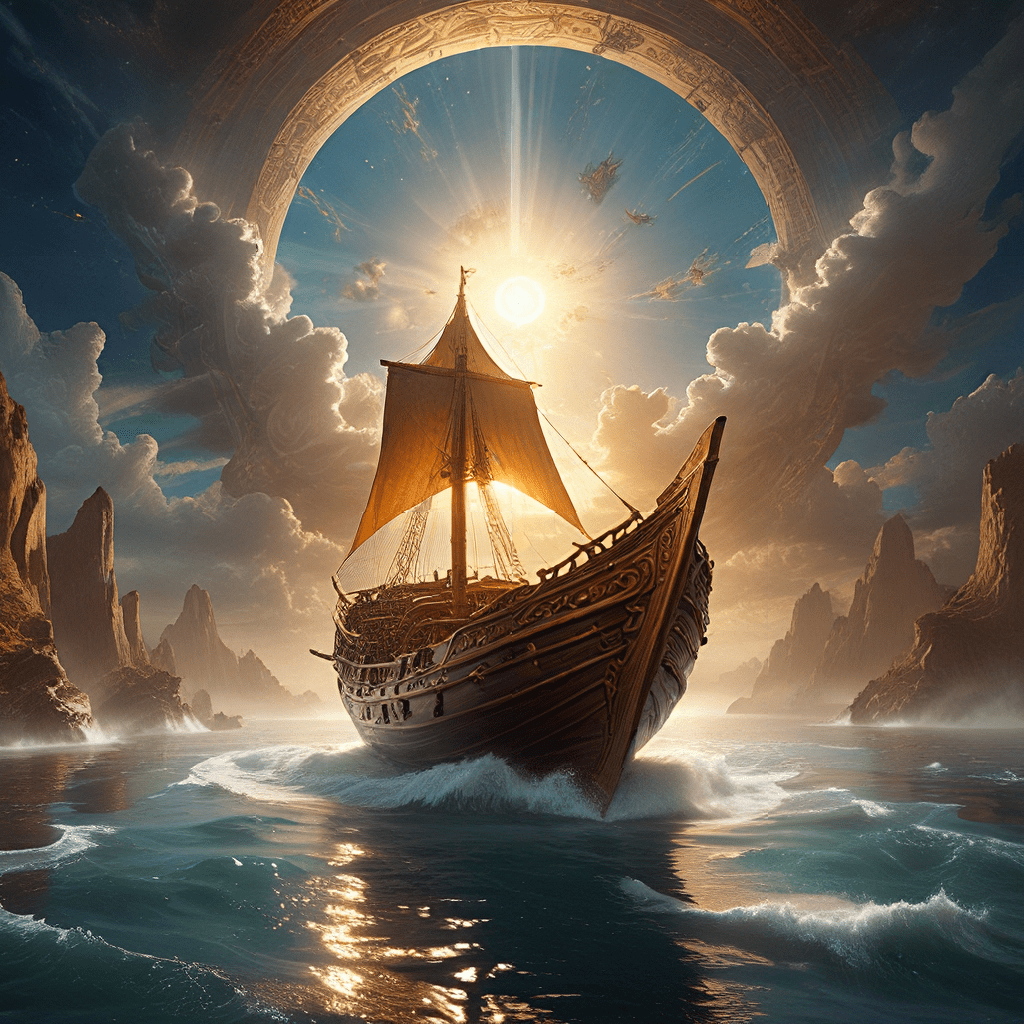The Celestial Boat: Ra’s Journey Across the Heavens
In the rich tapestry of ancient Egyptian mythology, the sun god Ra holds a central place, embodying the life-giving power of the sun and the cosmic order. His daily journey across the heavens, aboard a celestial boat known as the Solar Barque, formed the backbone of Egyptian cosmology and influenced their religious beliefs and practices. This article will delve into the fascinating mythology surrounding Ra’s journey, exploring the symbolism, rituals, and profound significance of the celestial boat.
1. Introduction: The Importance of Ra in Egyptian Mythology
Ra, the sun god, was considered the creator of the world, the source of all life, and the ultimate ruler of the cosmos. His daily journey represented the cycle of life, death, and rebirth, mirroring the rising and setting of the sun. Egyptians believed that Ra’s presence brought light, warmth, and fertility to the land, making him a crucial figure in their religious system. Their temples were often aligned with the movements of the sun, and their prayers and offerings were dedicated to ensuring Ra’s successful journey.
2. The Celestial Boat: A Symbol of Life and Renewal
The Celestial Boat, also known as the Solar Barque or the Boat of Millions of Years, was a central symbol in Egyptian mythology. It was a magnificent vessel, often depicted with intricate carvings and adorned with the eyes of Horus, representing protection and vigilance. The boat symbolized life, renewal, and the eternal cycle of creation and destruction. Its journey across the heavens mirrored the cyclical nature of the universe, with Ra’s daily transit symbolizing the passage of time.
3. The Morning Journey: Ra’s Ascent from the Underworld
Every morning, Ra would emerge from the underworld, the realm of the dead, called Duat. He would sail his Solar Barque through the eastern horizon, bringing light and warmth to the world. This ascent was a symbolic representation of rebirth and renewal, mirroring the cyclical nature of life and the triumph of light over darkness. The Egyptians believed that Ra’s journey from the underworld brought back the souls of the dead to the land of the living, providing a connection between the two realms.
4. The Daytime Voyage: Ra’s Triumph over Chaos and Darkness
During the day, Ra’s journey across the heavens was a battle against the forces of chaos and darkness. Apep, the serpent demon, would constantly attempt to swallow Ra’s Solar Barque, plunging the world into eternal darkness. Ra, with the help of other deities like Horus, would fight against Apep, ensuring the continued existence of light and order. This celestial struggle symbolized the constant battle between good and evil, with Ra representing the forces of creation and light.
5. The Evening Journey: Ra’s Descent and the Battle with Apep
As the sun began its descent in the west, Ra’s journey took him towards the underworld. Again, he faced the treacherous Apep, who lurked in the darkness, ready to extinguish the light. The celestial battle between Ra and Apep became a symbolic representation of the struggle against darkness and chaos, with the sun god prevailing against the forces of evil. Ra’s descent into the underworld marked the end of the day and the beginning of night, a time associated with death and the unknown.
6. The Underworld: Ra’s Passage Through the Realm of the Dead
The underworld, also known as Duat, was a mysterious and perilous realm where Ra’s Solar Barque had to navigate through a series of challenges and perils. He faced fierce creatures, treacherous rivers, and the ever-present danger of Apep. However, he was aided by other deities, like Anubis, the jackal-headed god of death, and Thoth, the god of wisdom and magic. Ra’s voyage through the underworld was a symbolic reminder of the journey of the soul after death, with the deceased seeking to join Ra in the afterlife.
7. The Role of Other Deities: Companions and Guardians of Ra’s Journey
Ra’s journey was not a solitary one. He was accompanied by a host of deities who played crucial roles in his celestial voyage. Horus, the falcon-headed god of kingship, was a constant companion, representing Ra’s strength and power. Thoth, the god of wisdom and magic, guided Ra through the challenges he faced in the underworld. Other deities, such as Bastet, the cat goddess, and Sekhmet, the lion goddess, provided protection and guided Ra’s celestial journey.
8. The Significance of the Solar Barque: A Vehicle of Life and Power
The Solar Barque was not just a vehicle; it was a powerful symbol of Ra’s divine authority and the source of life-giving energy. Its intricate details and symbolism reflected the complex beliefs of the ancient Egyptians about the universe and the cosmos. The Solar Barque connected the realms of the living and the dead, symbolizing the continuous cycle of life, death, and rebirth.
9. The Impact of Ra’s Journey on Egyptian Culture and Belief
Ra’s journey across the heavens had a profound impact on Egyptian culture and belief. It shaped their understanding of the universe, their calendar, and their religious practices. The cyclical nature of Ra’s journey reinforced the concept of cyclical time and the inevitable rhythm of life and death. The Egyptians sought to align their own lives with this cosmic cycle, ensuring a harmonious balance with the divine order.
10. Conclusion: The Celestial Boat – A Timeless Symbol of Cosmic Order
The Celestial Boat, with its intricate details and symbolism, remains a fascinating and enduring symbol of ancient Egyptian mythology. It is a testament to their deep understanding of the cosmos, their reverence for the sun, and their belief in cosmic order. Ra’s journey, aboard his Solar Barque, continues to inspire awe and wonder, reminding us of the cyclical nature of life, the power of the sun, and the constant struggle between light and darkness.




